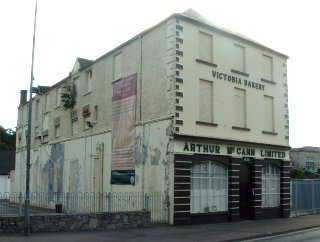Why would Newry & Mourne Council – at the ratepayer’s expense – commission a survey, inquiry and report upon bones found at the old Monastery site and then not release the results to the ratepayer?
Why is it important? Simple! It’s our history and besides, since we the ratepayers paid for this Report, it is ours. It ought to be in the public domain!
What do we know?
From a subsequent Report (notes, below) we learn that the burials (of the radiocarbon dated bones under study) date to the 15th-17th century: {quote Giles Dawkes, Draft Site Report, 2005, from the radiocarbon date unquote. from .. [Bagenal’s Castle Newry AE/05/052 Skeletal Report, Laureen Buckley]}.
Ms Buckley’s analysis of the 35 bodies’ remains is rigorous as far as it goes, but it fails to ask or to answer the most pertinent questions about these remains: i.e. who, what, how, when, where and why did they die and why were they buried in this particular location.
Knowing a little about radiocarbon dating (*) I am at a loss to understand why bones from particular individuals were not individually dated – since Ms Buckley was able to comment extensively on individual burial sites and their occupants. And I am at a loss to understand why those who died violently – some apparently hacked to death – are not identified to a particular century – not to say decade, which the method clearly admits of! (*)
Why might this be significant? Well, when Nicholas Bagenal in 1550 seized the buildings, lands and property of the Cistercian monks then in residence, he may have met with determined resistance and afterwards may have had to dispose of some bodies!
This is but one of many possible scenarios, but it is one that deserves to be investigated.
Let us quote from some weapon wounds to the bodies, as detailed by Ms Buckley:
(1) There was a sharp incised wound to the mastoid area of the left temporal bone. The wound was 5cm long and extended into the occipital bone. The weapon had entered the bone from above at a slightly downward angle.
(2) Just above the first wound was a small puncture wound with a V-shaped profile where an object had entered the bone.
This analysis continues for 8 more specific wounds to this individual and there are similar reports on many more persons.
However at no stage is there any determined effort to identify the slaughtered individuals as soldiers, monks or lay persons. Nor to say whether they belonged to the 15th, 16th or 17th centuries. This is a huge time span, covering for example in England of that period, the Wars of the Roses, the century and more of the Tudors, the Stuarts, the Civil War, Cromwell, the Restoration and so on. In Newry of the same period, at least half of that time saw the Cistercians in total occupation and control of the greater Newry and Carlingford areas and the Gaelic chiefs of O’Neill and Magennis in control of the outlying areas.
So despite Buckley’s otherwise rigorous analysis, we are largely none the wiser. She does however make one startlingly inappropriate conclusion:
‘Since the Cistercian abbey that was originally on the site ceased to exist in the 16th century, it is unlikely that these burials represent any of the burials associated with the monastery and indeed the stratigraphic report indicates that the burials cut through demolished walls of the abbey buildings.’
Since the abbey had existed then for at least four centuries, there would have been many demolished walls of pre-existing monastic buildings in situ.
And here’s another thing in relation to the term ‘stratigraphic’ above. Burials in any one plot take place stratigraphically i.e. the first unearthed presumably being the last buried. Was this recorded and taken into account? Or was a great heap of mixed bones sent off for analysis with no record of the depth at which they were individually discovered?
The various strata unearthed in sequence yield vital clues on chronology, especially in regard to the organic remains found there.
Whatever the case, we deserve to be informed!
And no effort is made to explain the contradictory radiocarbon dating evidence – i.e. that a century and a half of the projected time span DID indeed cover the monastic settlement period!
‘In addition’, she continues, ‘since the Cistercian rule forbade the burial of any lay people in their cemeteries, all the female and juvenile burials at least must post-date the dissolution of the abbey.’
Not so. The logic is faulty. Proper Cistercian burials – of their monks – took place within the Church – which we know was located several hundred metres south of the site. Of course, butchered monks – if such they were – would not be afforded this courtesy in death from their murderers!
But remember that the area of
Still, radiocarbon dating properly conducted would prove the case or otherwise.
In conclusion, the surveys, investigations and Reports seem to raise more questions than they offer answers.
The principal question for the majority of Newry people is whether Bagenal built any ‘castle’ at all in this location, or merely ousted the monks and occupied their home as his temporary, fortified 16th century town house.
And since that latter is, in our opinion, the more likely event, why are we extolling this fugitive, one-time spy and adventurer into the third millennium when he left little lasting legacy of which to be proud, to the people of Newry?
Surely the legacy of Christianity which came to us largely courtesy of the Cistercian monks of Newry is what we ought to be celebrating most into the third Christian Millennium?
*
‘Radioactive samples whose age falls between modern (i.e. the last 200 years) and background radiation, are given finite ages.
Standard errors released with each radiocarbon assay (see below) are usually rounded by convention (Stuiver and Polach, 1977). Again, not all laboratories subscribe to these conventions. Some do not round up ages.’
